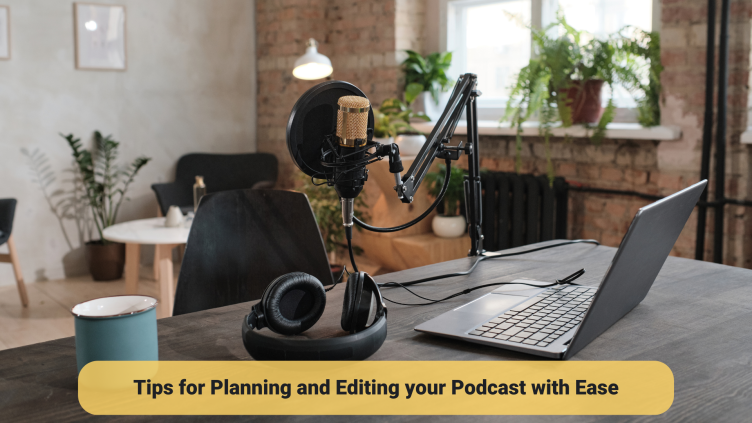Tips for Planning and Editing your podcast with Ease

Editing a podcast might seem like a daunting task at first, however, after learning a few tips on the basics of editing a podcast, you will be able to produce good quality audio without needing to hire a producer.
Prepare your recording environment
Your editing will only be as good as the foundation you have built for it. For example, try recording in a quiet environment that won’t work against you with unwanted background noises such as dogs barking, a fan, children playing, or people having conversations. Your microphone is likely to pick up all these external sounds which could then make your editing experience a nightmare. If you record in a quiet place, you will only need to deal with the flow of your audio instead of cutting out all the unwanted sounds which could be overwhelming and affect the quality of your audio.
Minimising Mistakes
As you gain practice in podcasting, you may notice that you frequently use filler words like "uhhhms" and "uhhhs" during your recordings. Turning this observation into a learning opportunity can help you avoid these sound effects that require editing. Additionally, consider adopting a recording method where you keep going after making a mistake, rather than stopping the entire session. This way, you can easily edit out the errors later. Continuously interrupting the recording for each mistake can unnecessarily lengthen your session, when the issues can be easily resolved through editing.
Define the Length of Your Podcast Episodes
This is an important factor to consider before recording. It doesn’t mean that all episodes have to be the same length, but it would help you and your listeners to know what to expect in terms of the length of your episodes.
Create a Memorable Intro and Outro
An intro and outro will make your podcast memorable. Your listeners will automatically know your podcast is starting based on the intro. Another benefit of an intro is that it gives them a snapshot of what your podcast is about and why they should listen. The outro is just as important as your intro as it leaves a strong impression on your listeners and keeps them coming back for more content.
Create Your Podcast Structure
Your podcast should have a flow that remains consistent with all the episodes. The flow of a podcast helps your listeners to know what to expect. Scripting your episodes can help you maintain this flow. An example of a podcast flow could be; Podcast intro, episode intro, main content, wrap-up, outro, and finally a call to action such as ‘subscribe to my podcast’ or ‘follow us on our social media pages’.
Listen to your episode before editing
It is important to give your episode a quick listen from start to end before editing so that you can mark all the sections that need editing from a high level. After the first listen, you can then go in and find the sections to edit but now you have a better idea of what is ahead and how to edit the current section.
Give it one last listen
You might have done a thorough editing session but some things may fall through the cracks. Giving your episode one last listen will make sure that your audio is indeed edited well, the quality is up to par and your episode is ready for publishing. Save yourself the embarrassing moments and give your episode one last listen before publishing.